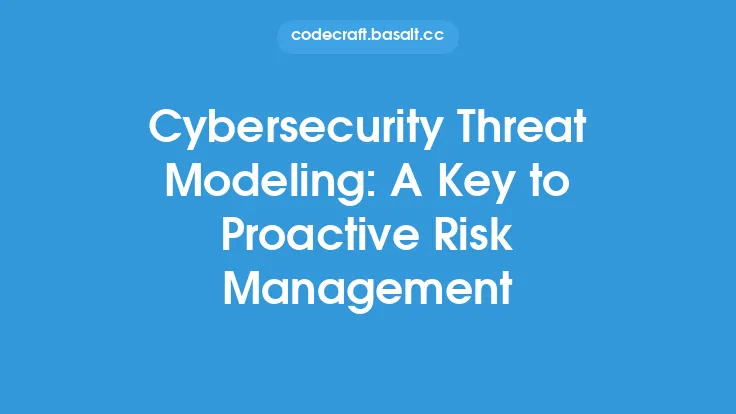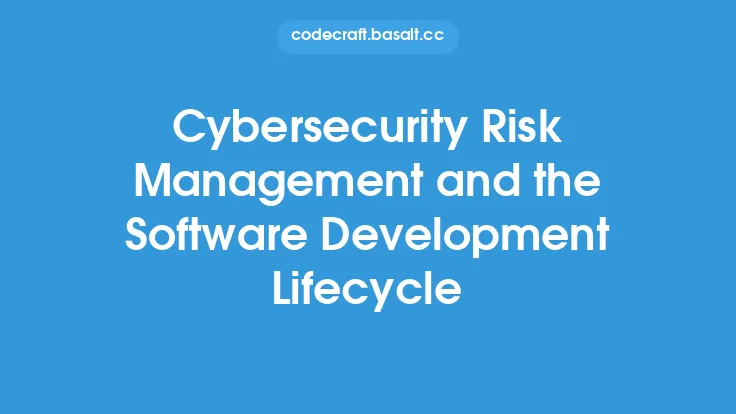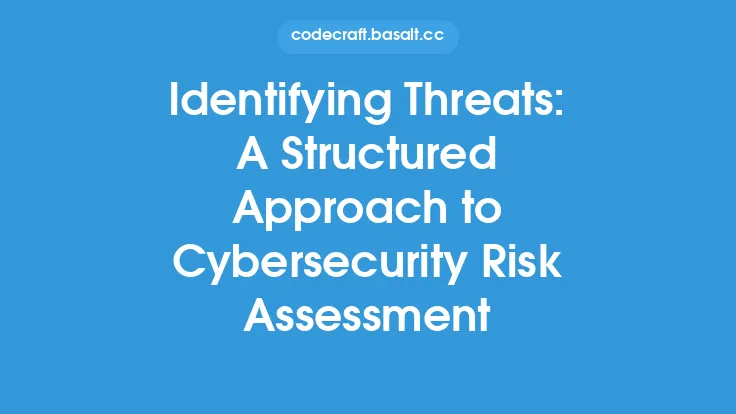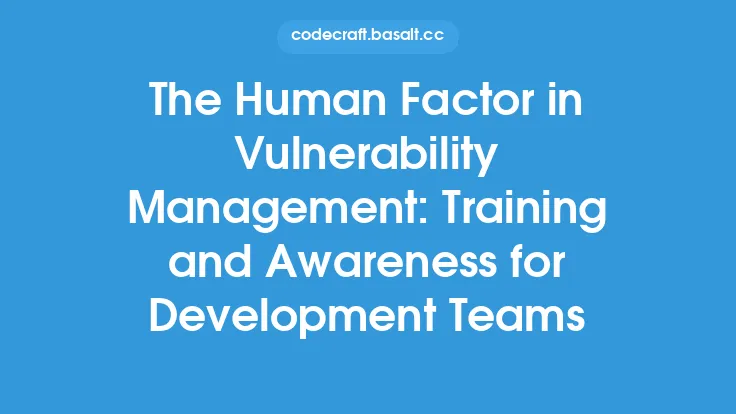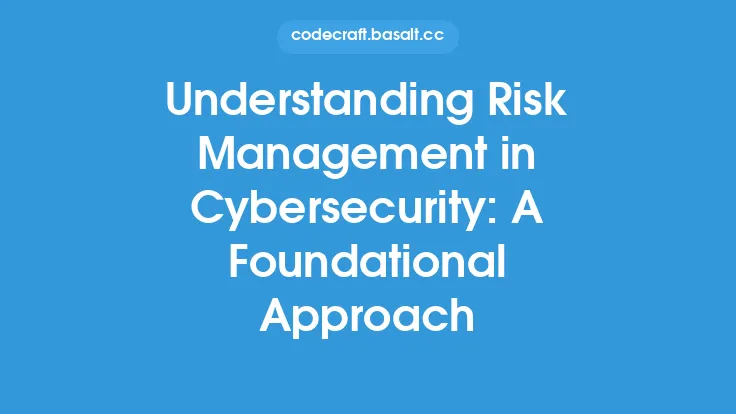As software development continues to evolve, the importance of cybersecurity risk management has become a critical aspect of the development process. Cybersecurity risk management is a proactive strategy that involves identifying, assessing, and mitigating potential security risks in software development. This approach enables developers to create secure software that protects users' data and prevents cyber threats. In this article, we will delve into the world of cybersecurity risk management, exploring its key concepts, benefits, and best practices for software developers.
Introduction to Cybersecurity Risk Management
Cybersecurity risk management is a systematic approach to managing security risks in software development. It involves a series of processes, including risk identification, risk assessment, risk mitigation, and risk monitoring. The goal of cybersecurity risk management is to minimize the likelihood and impact of security breaches, ensuring the confidentiality, integrity, and availability of software and data. By adopting a proactive risk management strategy, software developers can reduce the risk of cyber attacks, protect user data, and maintain the trust of their customers.
Key Concepts in Cybersecurity Risk Management
Several key concepts are essential to understanding cybersecurity risk management. These include:
- Threats: Potential occurrences that could compromise software security, such as hacking, malware, or denial-of-service attacks.
- Vulnerabilities: Weaknesses in software that could be exploited by threats, such as buffer overflows or SQL injection flaws.
- Risk: The likelihood and potential impact of a threat exploiting a vulnerability.
- Assets: Valuable resources, such as data, software, or hardware, that need to be protected.
- Controls: Measures implemented to mitigate risks, such as firewalls, encryption, or access controls.
Benefits of Cybersecurity Risk Management
Implementing a cybersecurity risk management strategy offers numerous benefits to software developers. These include:
- Reduced risk of security breaches: By identifying and mitigating potential security risks, developers can minimize the likelihood of security breaches.
- Improved software security: Cybersecurity risk management helps developers create secure software that protects user data and prevents cyber threats.
- Enhanced compliance: A risk management strategy can help developers comply with regulatory requirements and industry standards, such as GDPR, HIPAA, or PCI-DSS.
- Increased customer trust: By demonstrating a commitment to cybersecurity risk management, developers can build trust with their customers and maintain a positive reputation.
Best Practices for Cybersecurity Risk Management
To implement an effective cybersecurity risk management strategy, software developers should follow best practices, including:
- Conduct regular risk assessments: Identify potential security risks and assess their likelihood and impact.
- Implement secure coding practices: Follow secure coding guidelines, such as OWASP or CWE, to prevent vulnerabilities.
- Use threat modeling: Analyze potential threats and vulnerabilities to identify potential attack vectors.
- Implement controls and countermeasures: Use controls, such as firewalls or encryption, to mitigate risks.
- Monitor and review: Continuously monitor and review the risk management strategy to ensure its effectiveness.
Technical Aspects of Cybersecurity Risk Management
From a technical perspective, cybersecurity risk management involves several key aspects, including:
- Vulnerability management: Identifying and remediating vulnerabilities in software, using tools such as vulnerability scanners or penetration testing.
- Penetration testing: Simulating cyber attacks to test software security and identify vulnerabilities.
- Secure coding: Implementing secure coding practices, such as input validation or secure data storage, to prevent vulnerabilities.
- Cryptography: Using encryption and other cryptographic techniques to protect data and prevent unauthorized access.
- Network security: Implementing network security measures, such as firewalls or intrusion detection systems, to prevent unauthorized access.
Integrating Cybersecurity Risk Management into the Software Development Lifecycle
Cybersecurity risk management should be integrated into the software development lifecycle (SDLC) to ensure that security is considered at every stage of development. This includes:
- Requirements gathering: Identifying security requirements and incorporating them into the development process.
- Design: Implementing secure design principles, such as secure architecture or threat modeling.
- Implementation: Following secure coding practices and implementing controls and countermeasures.
- Testing: Conducting security testing, such as penetration testing or vulnerability scanning, to identify vulnerabilities.
- Deployment: Implementing security measures, such as firewalls or access controls, to protect deployed software.
Conclusion
Cybersecurity risk management is a critical aspect of software development, enabling developers to create secure software that protects user data and prevents cyber threats. By understanding key concepts, benefits, and best practices, software developers can implement an effective risk management strategy that minimizes the likelihood and impact of security breaches. By integrating cybersecurity risk management into the SDLC and following technical best practices, developers can ensure the security and integrity of their software, maintaining the trust of their customers and protecting against cyber threats.
